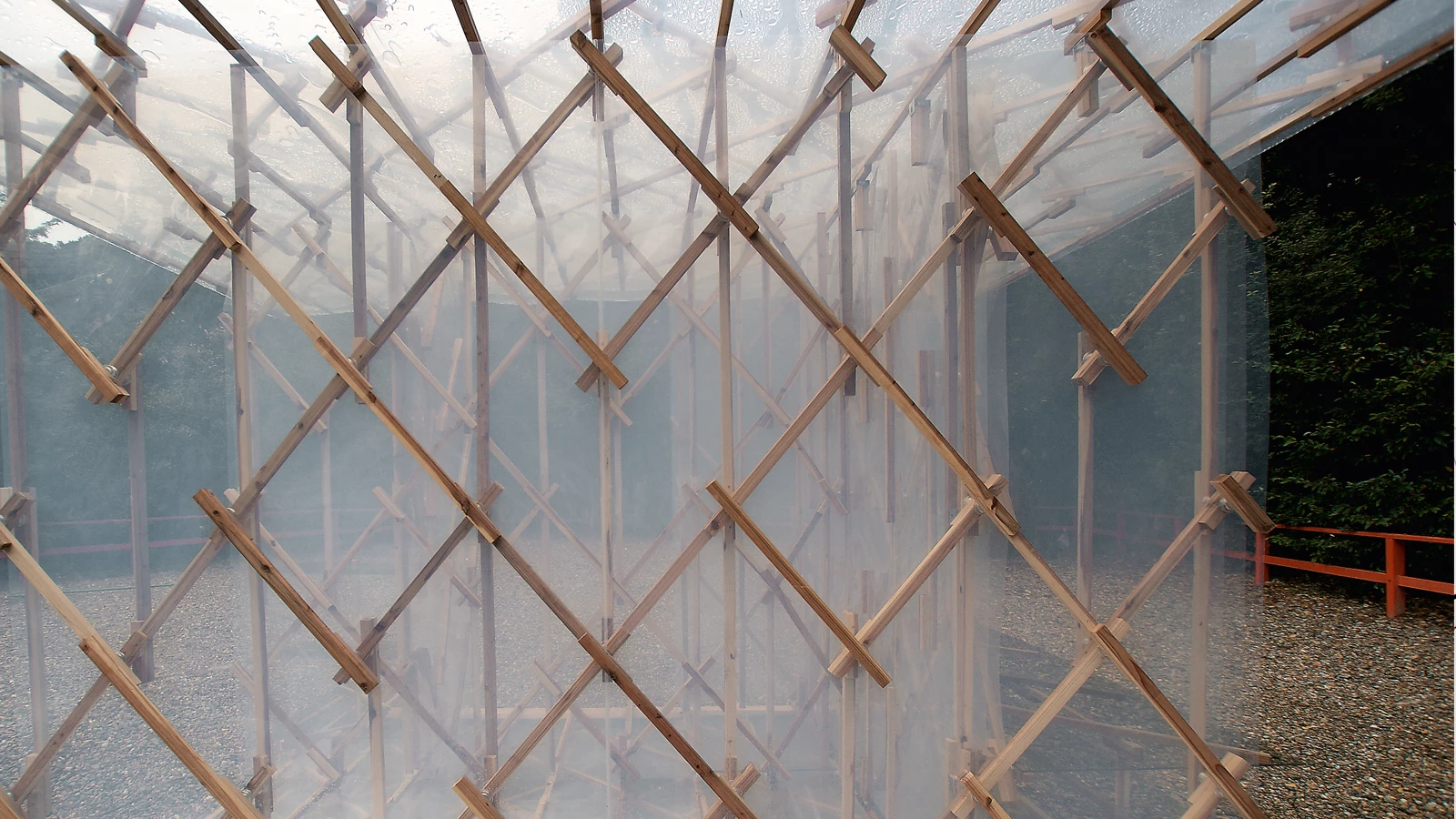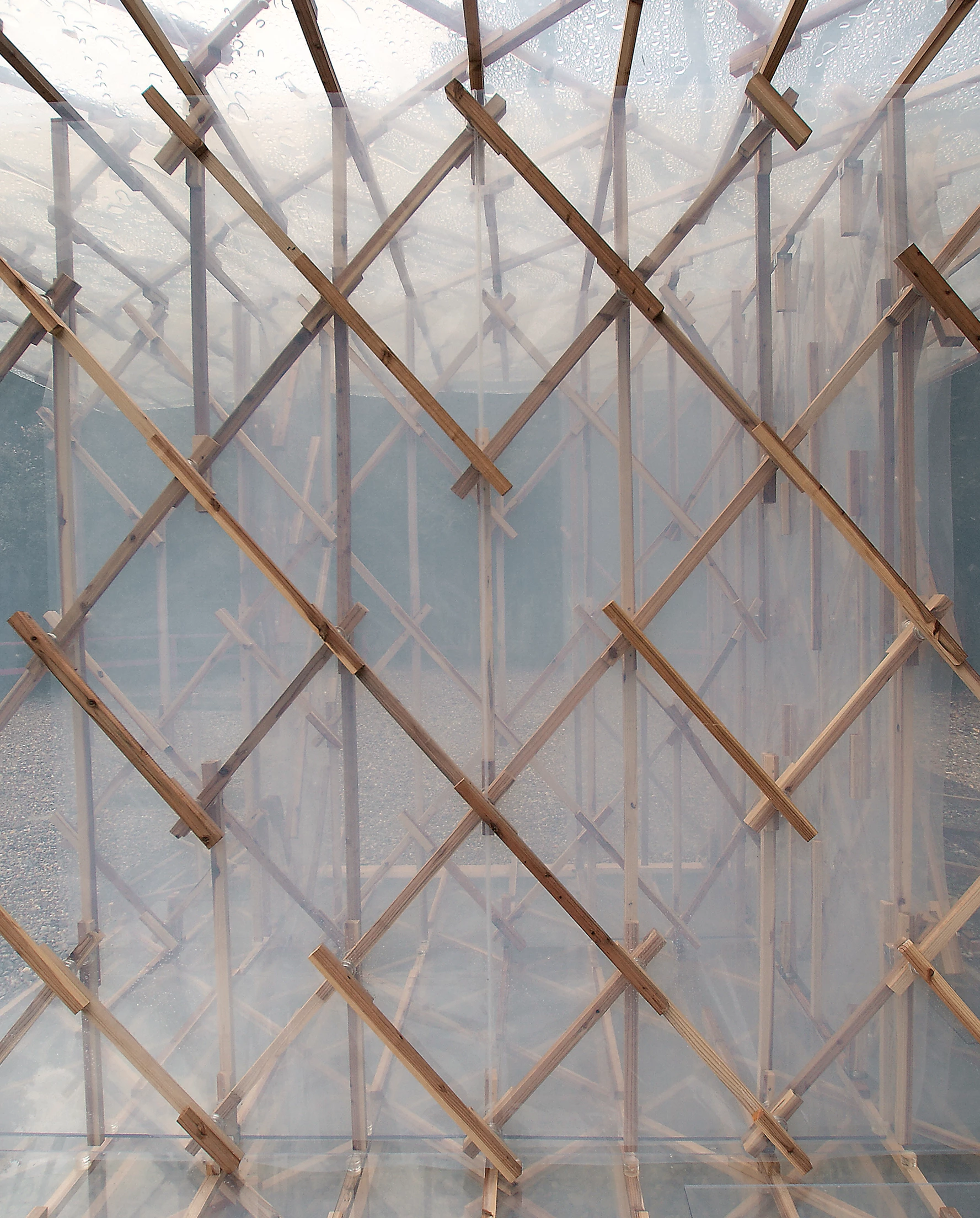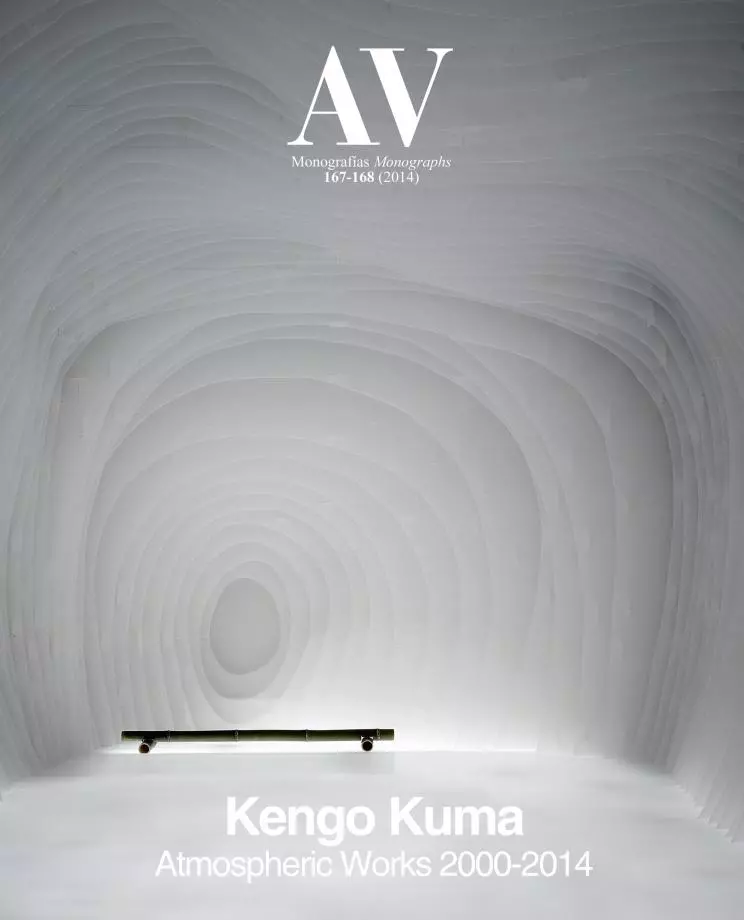Hojo-an after 800 Years
Kengo KumaThe Japanese poet and essayist Kamono Chomei (1155-1216) decided eight hundred years ago to live as a hermit in a small hut, Hojo-an, of approximately nine square meters (3 x 3). There he wrote one of his most important pieces, Hojoki (‘An Account of My Hut’), which talks about the sufferings of the Japanese people during medieval times. This humble cottage is often described as the prototype of Japan’s compact housing, a human-sized house from which one intimately senses nature, and is also considered the starting point of Japanese dwelling history.
The project aimed to reconstruct the house with a modern approach, method and materials, on the same site in the precincts of Shimogamo Jinja Shrine in Kyoto. In order to emphasize the idea of mobility found in the original hut described by the poet, the house is a light, demountable and translucent structure built with a combination of ETFE sheets that can be rolled up and are portable. A cedar material (section in 20 mm x 30 mm) is adhered to each sheet, and these bar-shaped wood pieces are firmly combined with powerful magnets, which work as a kind of tensegrity structure.
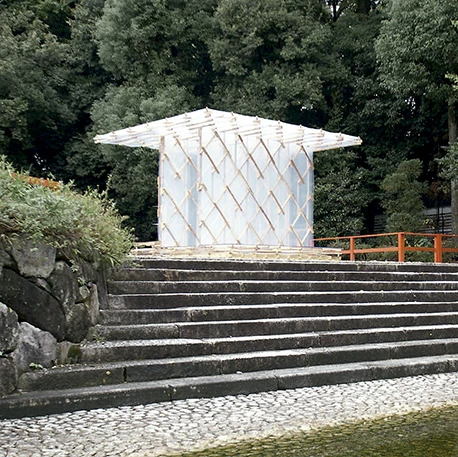

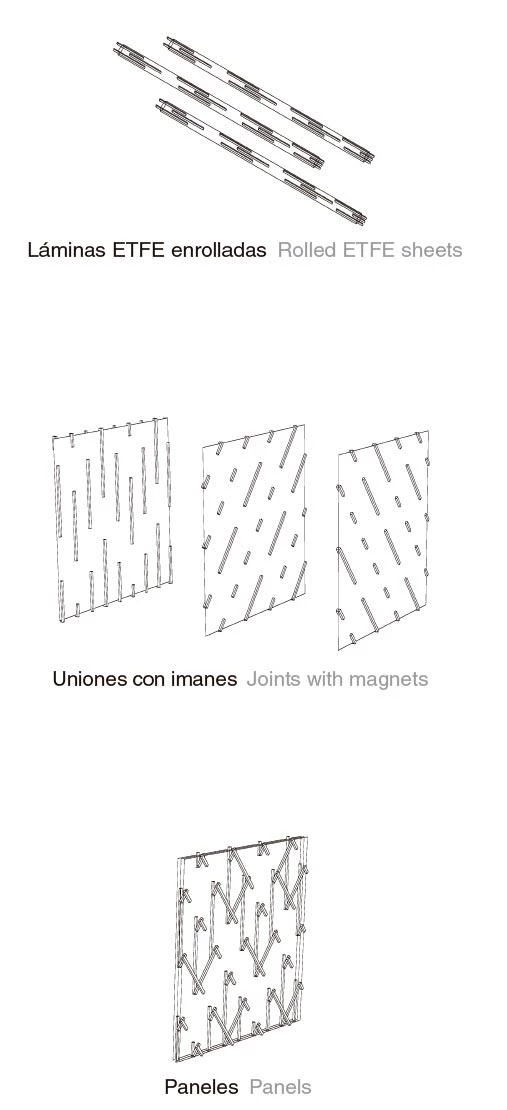
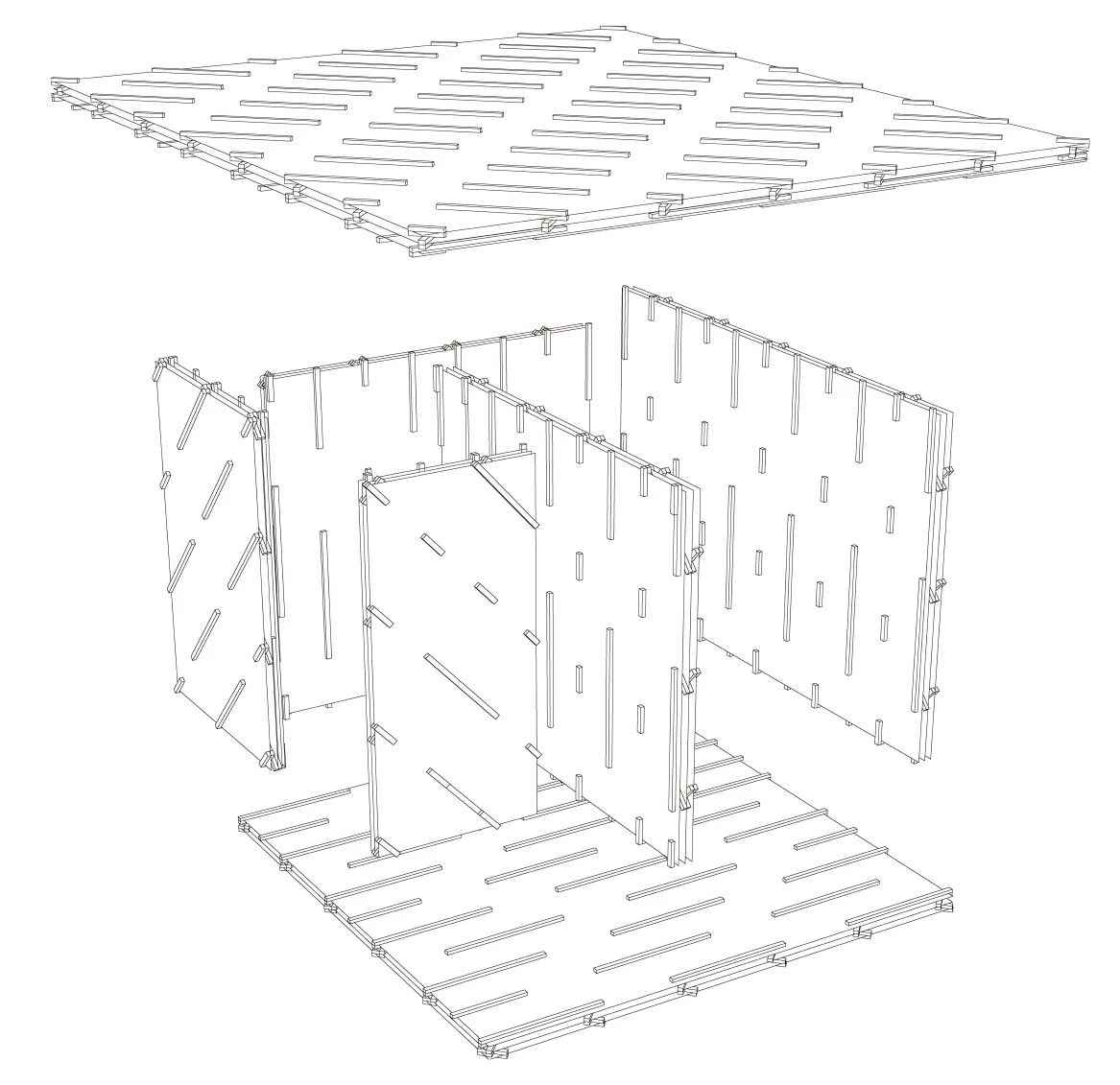
Cliente Client
Kaerugrass Co., Ltd.
Arquitecto Architect
Kengo Kuma & Associates
Colaboradores Collaborators
Egiri structure engineers (estructura structural engineering); Kyoritsu industries Co., Ltd. (ETFE); Nichilay magnet Co., Ltd. (imán magnet)
Contratista Contractor
Kengo Kuma & Associates
Fotos Photos
Kengo Kuma & Associates

